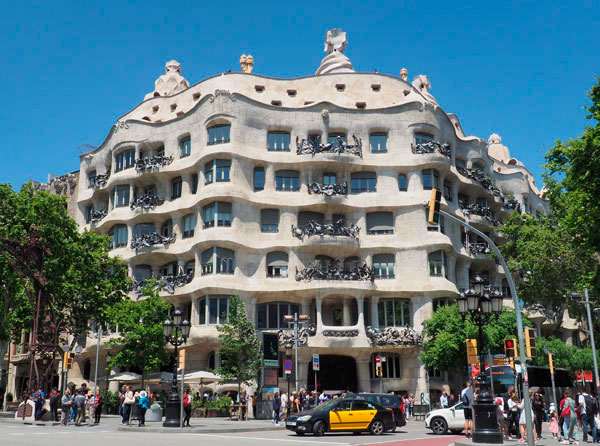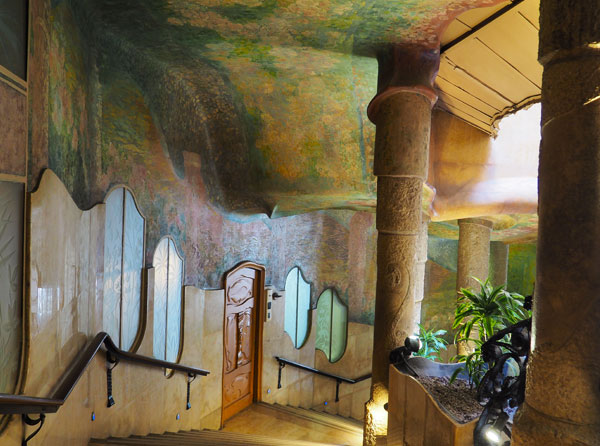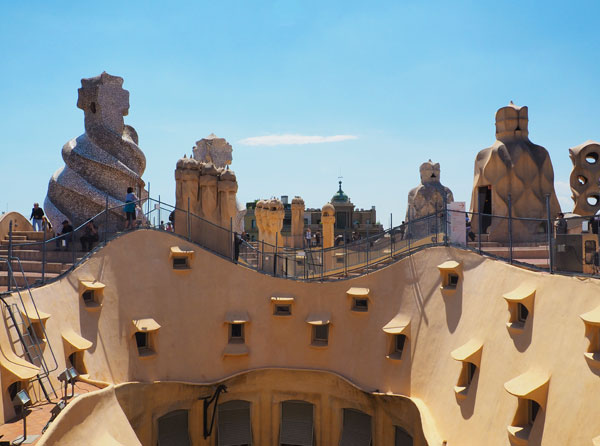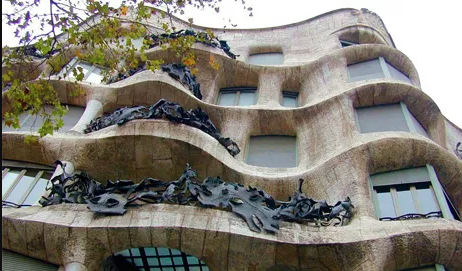Casa Milà, popularly known as La Pedrera (meaning “stone quarry” in Catalan), is Antoni Gaudí’s last civil work, which he started in 1906 and finished in 1912. Although Antoni Gaudí was particularly well known for his modernist phase, this work is considered “modern”. Included in the World Heritage List in 1984, along with Park Güell and Palau Güell, it was one of the first places of the industrial era to be added to the list of the most exceptional sites in the world. Its nickname, “La Pedrera”, refers to its external appearance, where stone has been used as a key material for the design of the façade and the balconies.

How to get to La Pedrera
You can get there by public transport on metro Line 3 (Green) and Line 5 (Blue), getting off at the “Diagonal” stop. You can find Casa Milà in Provença, on the corner of Passeig de Gràcia.
When to visit La Pedrera
La Pedrera opens all year round, although its opening hours change depending on the time of year.
From 1 March to 3 November: 9:00 to 20:30
From 4 November to 28 February: 9:00 to 18:30

10 interesting facts about La Pedrera
1. Did you know that Antoni Gaudí only designed 3 residential buildings? The first was Casa Calvet, then Casa Batlló and finally Casa Milà.
2. Antoni Gaudí did not finish La Pedrera as he would have liked, due to disagreements with the Milà family. Initially, he wanted to include a large sculpture of the Virgin Mary at the top of the building, an idea that did not prosper. In this respect, not only did he have differences with the family, but also with the local residents and Barcelona City Council.
3. Did you know that La Pedrera was ridiculed in its time? Mocking its modern style, it was compared to a garage for zeppelins, for example, in this cartoon published in the satirical newspaper L’Esquella de la Torratxa.

4. Casa Milà has one of the most iconic terraces in the city due to the sculptured chimneys and air vents that Antoni Gaudí designed for this emblematic building. In line with his usual style, Gaudí designed a terrace full of curves, with both decorative and functional purposes, enabling the better distribution of the light through its two enormous inner courtyards.
5. The Sagrada Familia can be seen from the terrace of La Pedrera. Just like the terrace of Casa Batlló, the architect designed a space from which to admire his most important work: the Sagrada Familia.

6. Did you know that La Pedrera inspired George Lucas? Although it is not known for sure, there are people who say that the director and creator of Star Wars was inspired by the chimneys of La Pedrera for the design of the helmets of the imperial soldiers.
7. Antoni Gaudí, a pioneer of recycling. The architect reused waste glass and ceramic for decorative purposes, both on the chimneys and air vents and for the creation of the trencadís, a type of decoration with broken mosaic.
8. La Pedrera was the first house on Passeig de Gràcia with underground parking for carriages. This is one interesting fact about its construction. Another is that there is not a single load-bearing wall in the whole building, they are all columns and open spaces.
9. The stone used for the ground floor of La Pedrera was initially from the Garraf stone quarry, and later stone from Vilanova was used. Both towns are located 30 and 50 km away from Barcelona, respectively.
10. Current uses of La Pedrera. Currently, one part is still a residential building and the other has been turned into a cultural centre managed by the Fundación Catalunya La Pedrera. This centre has an office area and other visitor areas, such as the final floor apartment and the loft that accommodates the Gaudí Space, an exhibition area showing models of his most outstanding works.

